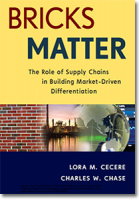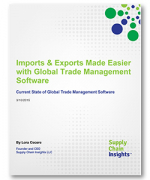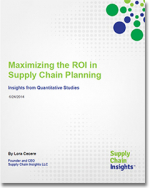Building the Green Supply Chain
“Supply chain sustainability” is the management of environmental, social and economic impacts and the encouragement of good governance practices, throughout the lifecycles of goods and services - United Nations Global Compact.
Within an organization, supply chain sustainability can be known by many names: the green supply chain, the good citizenship report, Corporate Social Responsibility (CSR) policy, or fair trade.
The programs may have different names, but the goals are focused on creating a better balance between the corporation’s efforts to manage profit, people and planet.
For many, this can be a stark contrast to the traditional supply chain goals of the right product at the right place at the right time.
To meet the stated corporate goals for sustainability programs, it is critical for supply chain and corporate sustainability teams to work well together.
The success of one is dependent on the success of the other.
Over the last ten years, corporate sustainability goals have transformed supply chain objectives causing companies to rethink their definitions of supply chain excellence. Much is in flux.
While the importance of these programs has grown over the last decade, in this research we find two disconnects.
The first is the ability for the company to meet its stated goals based on the scope of activities. As shown in figure 1, 92% of respondents surveyed have a public statement or declaration of goals and policies for corporate sustainability, and it has grown in importance to the definition of the brand promise.
In fact, today, 74% of respondents surveyed connect their success in sustainability to their brand statements. For many, the goal is to use sustainability as a brand advantage.
Many companies are vulnerable. The greatest impact on corporate sustainability (often more than 70% of resources consumed by manufacturers, retailers, and distributors) is outside the company’s four walls; yet, as shown in figure 1, only 20% of respondents are focused on the entire value network (from the customer’s customer to the supplier’s supplier.)
While the most common focus is on the enterprise, the greatest corporate risk lies outside the four walls of the enterprise, and companies are staking both their corporate and brand reputations on their abilities to deliver.

Take the latest Green Supply Chain Survey
For your participation in this survey, Lora Cecere, Supply Chain Insights Founder & CEO, will provide a free one hour consultative call with you and your organization to review the results and discuss your own talent strategies.
Take Your Green Supply Chain Survey
What’s Related




Favorites





